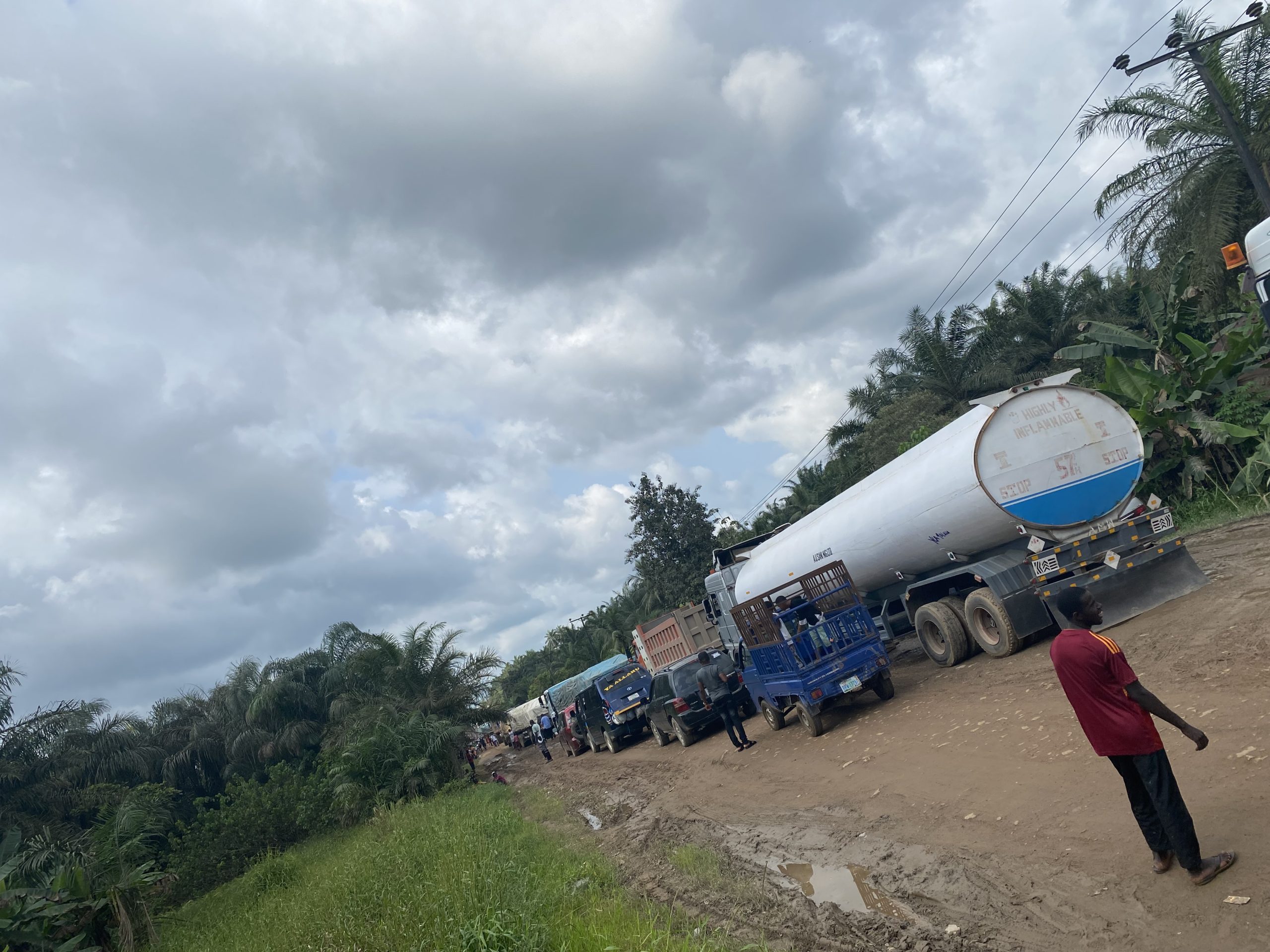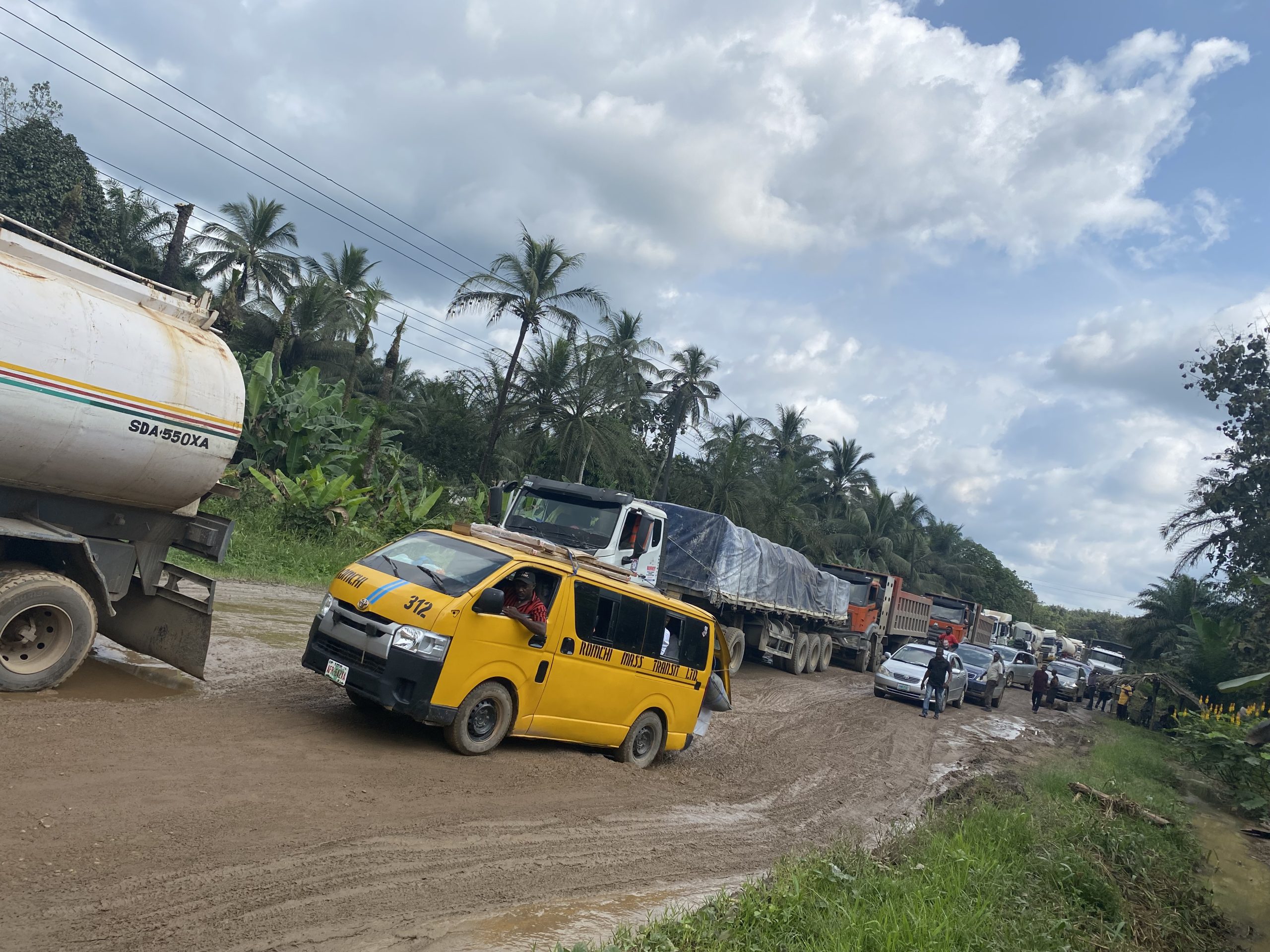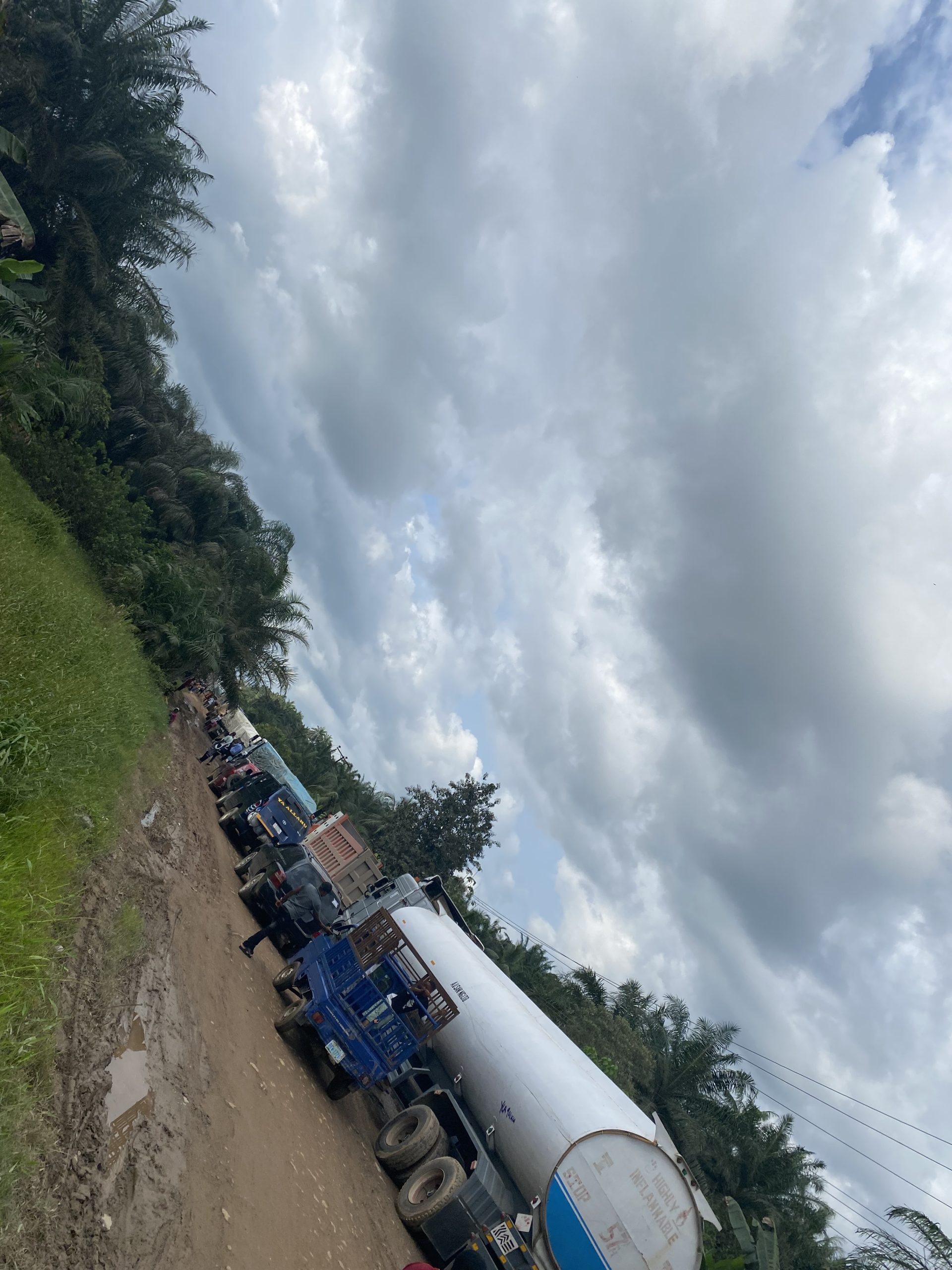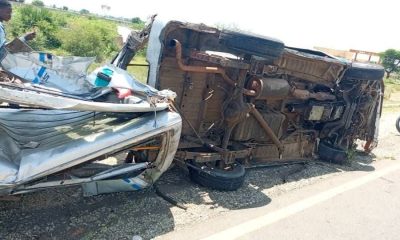News Update
Heavy Traffic on Akamkpa–Uyangha Road as Bad Road Causes Major Gridlock

The Akamkpa–Uyangha axis, a vital link between Calabar, Akamkpa, and parts of the Niger Delta, has long been a nightmare for drivers.
Also Read: Senator Asuquo Ekpenyong Facilitates 20km Okomita-Uyanga-Ehom Road Rehabilitation
The latest blockade, witnessed on Tuesday, left hundreds of vehicles, including petroleum tankers, articulated trucks, and local transport buses, immobilized for hours as they struggled to navigate deep potholes filled with rainwater and clay.
 From the uploaded images taken by RoadKing.ng correspondents, the scene paints a vivid picture of chaos:
From the uploaded images taken by RoadKing.ng correspondents, the scene paints a vivid picture of chaos:
- A yellow commercial bus wedged between tankers, trying desperately to find footing on a muddy path.
- Long lines of trucks carrying cement, fuel, and building materials, stretching several kilometers.
- Stranded passengers standing helplessly by the roadside, some removing their shoes to wade through puddles.
“This road is killing our business and wasting our lives,” lamented a local driver identified simply as Okon, who operates the Akamkpa–Uyangha route daily.
“Each time rain falls, we get stuck here for hours. Tankers get trapped, trucks fall, and passengers have to trek. Sometimes, it takes a whole day just to cover 10 kilometers.”
The Akamkpa–Uyangha corridor is more than just a local road; it is a strategic economic lifeline connecting Cross River’s timber, quarry, and agricultural hubs to markets across southern Nigeria. The road also serves as a major route for petroleum tankers supplying products from the Calabar depot.
 However, over the past few years, the road has deteriorated into a muddy trap, worsened by poor drainage, lack of maintenance, and the constant movement of heavy-duty trucks.
However, over the past few years, the road has deteriorated into a muddy trap, worsened by poor drainage, lack of maintenance, and the constant movement of heavy-duty trucks.
Commuters say the situation has worsened since mid-2024 when the last round of patch repairs washed away after the first heavy rains.
Residents now call it “Nigeria’s forgotten route.”
A local trader, Mrs. Eno Udo, who travels weekly to Calabar to buy goods, said:
“I spend more on transport than on the goods themselves. Sometimes, I sleep inside the bus because the road becomes impassable at night. If not for okada riders who help us cross some parts, many would be stranded forever.”
Perhaps the most alarming aspect of this gridlock is the number of fuel tankers trapped on the muddy stretch. In the photos obtained by RoadKing.ng, several tankers bearing “Highly Inflammable” warnings can be seen lined up dangerously close, some with leaking hoses and tilted tanks.
Experts warn that this is a ticking time bomb.
Speaking with RoadKing.ng, a road safety analyst, Engr. Charles Ekwere, said:
“Fuel tankers should never be allowed to cluster on narrow, bad roads like this. One small spark from friction, heat, or collision can trigger an explosion. The authorities must act immediately before another tragedy occurs.”
The Federal Road Safety Corps (FRSC), in a recent statement, acknowledged the increasing risk posed by parked or stuck tankers on bad roads, urging tanker drivers to “avoid overloaded operations and always maintain safe distance, especially on wet terrains.”
However, most of the tanker drivers who spoke to RoadKing.ng said they had no choice but to use the route, as alternative paths are either longer or equally damaged.
Each day of standstill on the Akamkpa–Uyangha road translates into millions of naira in losses for traders, transporters, and industries.
Food supplies perish in trucks, fuel delivery delays affect filling stations, and workers lose valuable man-hours.
A truck driver transporting cement from Calabar to Uyo told RoadKing.ng:
“This road is like punishment. The cement I carry should reach Uyo in five hours, but I’ve been here for almost two days. We eat, sleep, and work inside this traffic.”
Economists estimate that Nigeria loses over ₦250 billion annually to bad roads nationwide, with Cross River and Akwa Ibom among the hardest hit in the South-South region.
The Akamkpa–Uyangha route alone reportedly records an average of 30 truck breakdowns weekly due to axle failure and tyre damage from potholes.
️CALLS FOR URGENT GOVERNMENT ACTION
Anger is growing among road users, who accuse both state and federal authorities of neglect.
Community leaders in Akamkpa have repeatedly appealed for the road’s rehabilitation, but beyond grading exercises and temporary patchwork, no major reconstruction has taken place.
“We are tired of promises,” said Chief Nyong Uyangha, a community elder.
“Every election season they come here to campaign and take pictures on this same road, but after elections, they disappear. If this road were in Abuja, it would have been rebuilt ten times.”
Several calls to the Federal Ministry of Works and the Cross River State Government went unanswered at press time.
However, a source within the local government hinted that a federal intervention project is “in the pipeline,” though no official timeline has been announced.
SAFETY ALERT: RISK OF COLLAPSE AND ACCIDENTS
Apart from traffic jams, the road now poses serious safety hazards.
Motorists risk overturning, vehicles skid uncontrollably on the clay soil, and deep craters can trap tyres entirely.
In the rainy season, sections of the road reportedly become so soft that vehicles sink halfway, requiring tow trucks or community youths to pull them out for a fee.
This unsafe condition has also increased the frequency of accidents, especially at night.
Between January and October 2025, local vigilantes and FRSC records indicate at least 18 road crashes along the Akamkpa–Uyangha axis, involving trucks, tankers, and buses, many caused by poor visibility, slippage, or mechanical failure due to road stress.
ROADKING.NG OBSERVATION
From on-site observation and photos obtained during our field report, the Akamkpa–Uyangha road is barely motorable in multiple sections.
The terrain alternates between deep potholes, narrow lanes, and pools of stagnant muddy water.
Several vehicles are forced to drive off-road, trampling through farmlands to bypass the gridlock.
In the second image, a man stands beside a stranded tanker, hands on his hips, watching helplessly as other drivers try to maneuver.
The entire road is lined with palm trees and overgrown vegetation, a natural reminder of how neglect and nature have reclaimed the highway.
LONG-TERM SOLUTION: WHAT CAN BE DONE
Experts recommend a full reconstruction of the road using asphalt concrete or reinforced laterite capable of withstanding heavy-duty traffic.
They also propose:
- Drainage installation to channel floodwater away.
- Weight control checkpoints to reduce damage from overloaded trucks.
- Dedicated tanker lanes for petroleum transporters.
- Community monitoring units to report blockages early.
- Public-private partnership for maintenance funding.
The Federal Government’s 2025 National Infrastructure Plan lists several strategic road corridors for urgent upgrade — but as of now, Akamkpa–Uyangha is not among them.
The Akamkpa–Uyangha traffic chaos is a stark symbol of how poor infrastructure continues to cripple Nigeria’s road transport system.
Beyond inconvenience, it is a threat to safety, commerce, and national productivity.
If nothing is done urgently, the road risks total collapse before the next rainy season, putting more lives at risk and isolating entire communities.
























